-
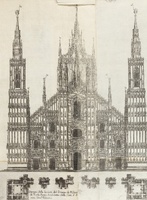
The Milan Cathedral took nearly six centuries to complete and is the largest church in Italy. Built around an older basilica, the Santa Maria Maggiore, the façade remained that of the fifteenth-century building until the beginning of the seventeenth century. This volume is a collection of proposals and designs for the new façade submitted by architects and engineers including Francesco Castelli, Francesco Maria Richini, Carlo Buzzi, and Gian Lorenzo Bernini. Buzzi's plan—with the clever use of flaps in order to display alternate designs—is shown here. It was the basis for the final design completed in 1805. A surprising artifact of the papermaking process lurks in this book—a handprint impressed into the paper fibers! It is likely the vatman's hand, deliberately pressed into the freshly formed sheet in the mould.
-
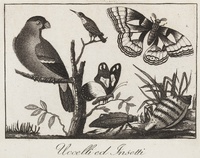
Translated from the French, this manual instructs the amateur on how to paint with watercolors and gouache and contains examples from Annibale Carracci, Rembrandt, and Claude-Joseph Vernet. At the end of the volume are blank palettes with names of colors which the owner could paint in with the correct hues and tints.
-
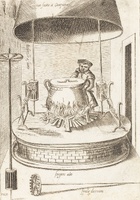
This work combines two of the most important Renaissance books on cooking, service, and etiquette: the monumental Opera dell'arte del cucinare by private chef-to-the-popes Bartolomeo Scappi (circa 1500- 1577) and Vincenzo Cervio's (active 16th century) posthumous treatise on meat carving Il Trinciante (The Carver). Scappi's work was first published in 1570 and was reprinted many times. It is one of the earliest illustrated cookbooks and contains 1,000 recipes, rules for courtly feasts, and even meal plans for papal conclaves. Its illustrations depict Renaissance kitchens and cooking utensils, including the first known picture of a fork. Cervio's work Il Trinciante was finished by fellow carver Fusoritto da Narni and was first published in 1593, along with two of Fusoritto's dialogues, including Il mastro di Casa.
-

Giustiniana Wynne, later Countess Justine Rosenberg-Orsini, was born in Venice in 1737. A respected author and art historian, she was a prominent member of the pan-European intellectual circle based in Venice. Wynne's early years are better known for a clandestine affair with the son of one of Venice's ruling families, Andrea Memmo; because of their different social classes, they could not marry. She later married Count Rosenberg-Orsini in a secret ceremony. Wynne is also known for an encounter with Casanova and appears in his memoirs. Alticchiero, or Altichiero, is the name of Angelo Querini's villa and gardens on the banks of the river Brenta, near Padua. Querini (1721-1796) was a senator and officer of the Republic of Venice, until his moderate views led to his imprisonment. Upon his release, he retired to Altichiero and created a haven for enlightenment ideas through sculpture, gardens, and landscape architecture. The gardens included an "altar of friendship" and an "altar of the furies" as well as aviaries, labyrinths, and hunting grounds, detailed in the plan shown here.
-
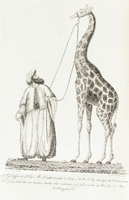
In 1827 Muḥammad ʻAlī Bāshā, Governor of Egypt, sent three giraffes as diplomatic gifts to various European rulers. This giraffe was sent to Francis I, Emperor of Austria, and was in Venice for forty days in 1828, causing a giraffe "craze" before being sent on to the Schönbrunn Palace in Vienna. Animal diplomacy is not uncommon—elephants, rhinoceroses, lions, and more have been gifted for thousands of years—and still happens to this day.
-
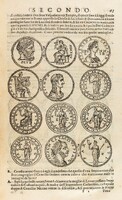
The study of antiquities, especially ancient coins, flourished in the last half of the sixteenth century. Antonio Agustín y Albanell (1517-1596) was archbishop of Tarragona in notheast Spain, jurisconsult, and numismatist. His dialogues, originally written in Spanish, critiqued his contemporaries and their studies for ignorance of the classical Latin sources. Only one hundred copies of his work were printed, as he did not want his opinions on the inferiority of other numismatists to be widely known. He considered himself an artisan and made all of the woodcut illustrations of the various coins, medals, and ruins that appear throughout the work.
-
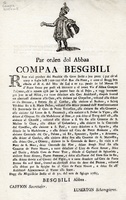
The ephemera shown here is part of a group of notices, announcements, and keepsakes for weddings, balls, festivals, and other courtly activities in the Duchy of Milan in the last half of the eighteenth century. The item above, "Par orden dol abbaa Compaa Besgbili" is in Milanese dialect and relates to a performance by the Fecchin dol Lagh Mejo, or Porters of Lake Maggiore, in this case honoring the arrival of the Count and Countess Castellamare in Milan on July 6, 1785. "Giornale delle feste, che debbonsi fare per le nozze delle LL. AA. RR" lists the festivities celebrating the wedding of Ferdinand, Archduke of Austria, and Maria d'Este for two weeks in October 1771.
-
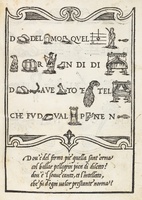
The typeface Palatina, designed by Hermann Zapf, was named in honor of the author of this writing manual Giovanni Battista Palatino (1515-circa 1575). A professional calligrapher, Palatino's instuctional book illustrates different scripts of the time, such as mercantile, chancery, and gothic cursive, and how they vary across regions and countries. Different alphabets, such as Chaldean, Hebrew, and Greek, are also depicted. "Sonetti figurati," rebus puzzles in which pictures represent words in the sonnets below, as well as text on ciphers and cryptography and recipes for ink, also appear in the volume.
-
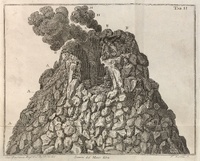
Lazzaro Spallanzani (1729-1799) was a priest, biologist, and physiologist who conducted numerous studies on animal reproduction and bodily functions, including spontaneous cellular regeneration and echolocation, and performed some of the first experiments on artificial insemination. Spallanzani visited Vesuvius in Campania as well as other volcanoes on the island of Sicily in 1788. He published his findings in the six-volume Viaggi alle Due Sicilie in 1792, laying the foundations for the study of volcanology and meteorology. The engraving depicts several scientists peering into a crater at the summit of Mount Etna, which had erupted spectacularly the year before.
-
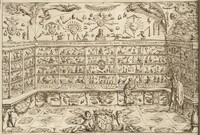
Marquis Ferdinando Cospi (1601-1686) donated to the Senate of Bologna in 1660 his extensive collection of natural history specimens and archaeological objects, which was later combined with the vast botanical and zoological collections of Ulisse Aldrovandi (1522-1605). This inventory of the collection was published at Cospi's expense and has numerous woodcuts and an impressive copper engraving of the interior of his museum. At top a bust of Dante overlooks the cabinet of curiosities, containing both natural and manmade animal specimens, fossils, shells, scientific instruments, and rare books, with Cospi and the museum's custodian Sebastiano Biavati below.
-
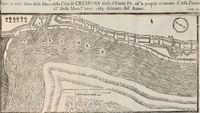
Capra's work is one of the key studies on flood control and river bank engineering, specifically of the Po River that forms the boundary between the regions of Lombardy, Emilia-Romagna, and the Veneto. It provides practical advice on how to protect the walls of the city of Cremona from the assaults of the Po. Engineering the river to prevent flooding and aid irrigation was a priority for many northern Italian towns in the seventeenth century, especially following devastating famines and the plague outbreak of 1629-1630.
-
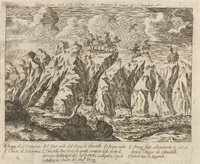
The physician Borsieri (1725-1785) achieved notoriety at a young age after successfully containing a plague outbreak in Faenza using mercury compounds. He continued his analysis of mineralogical components of the surrounding area, first publishing his treatise on the waters of San Cristoforo in 1761. Borsieri was one of the first to analyze mineral waters for their medicinal and therapeutic value, paving the way for the modern study of medical hydrology. Unlike many doctors at the time, who claimed that mineral waters were cure alls, Borsieri argued that they were effective in treating only certain ailments depending on the mineralogical components in the water.
-
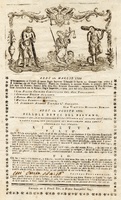
This broadside issued by the Royal Supreme Health Tribunal of the Republic of Venice states that the miraculous pill called "Pievano," secret recipe of Giovanni Giacomo Zannichelli, is legitimate, as decreed in 1769 and renewed in 1799. The miracle pill was for gastrointestinal problems, and most importantly would not interfere with malaria treatments made from "chinachina," or quinine, a component of cinchona tree bark. Malaria, from "mal aria," or bad air, was a widespread problem in Italy, especially in the central and southern regions and marshes of Venice.
-

Antonio Cavagna Sangiuliani's monogram, surmounted by a crown with elements of the Cavagna family coat of arms: a golden lion and blue band with a golden basket ("cavagno") within.
-
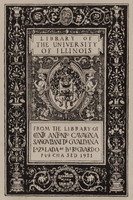
Bookplate designed for the collection by W.C. Titcomb, featuring the Cavagna family crest and the motto of the University of Illinois: Learning and Labor.














